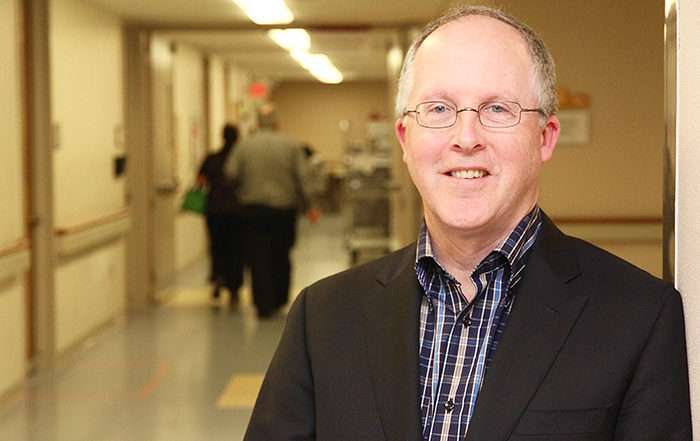Patients may benefit from 'cool' research

Research led by Western neurosurgeon Dr. Stephen Lownie looks to offer fellow doctors precious time when saving a life – perhaps doubling or tripling treatment time for patients who suffered an aneurysm or stroke.
"There is no worse position than when the clock is counting down and you're not going to make it," Lownie said.
Currently, doctors have between two and three hours after a patient suffers a stroke to offer treatment, usually a clot-busting drug. For every hour treatment is delayed, the brain loses neurons equivalent to more than three years of normal aging.
To extend that time, Lownie and fellow physician Dr. David Pelz, a neuroradiologist, both of the Schulich School of Medicine & Dentistry, are studying selective brain cooling. The idea behind it is by 'refrigerating' a specific area of the brain, the tissue is protected creating more time for treatments to be performed, thus preventing stroke damage.
"The interesting part of all this (cooling) is none of this is all that new. It's just old methods used in a new way," Lownie said.
Hypothermia has been used for many years as a way to prevent tissue damage resulting from restriction of blood supply to the brain or other organs, he continued, adding taking the treatment window from three to six hours would be a huge step.
As far back as the 1930s, cooling was considered a possible tool to treat cancer, tumours or heart surgery. Cooling, or hypothermia, shuts off the brain's need for blood and, if you lower the temperature of anything, the reactions proceed more slowly. "You go from an F1 race car to a Lada," Lownie said.
Decades ago, the process involved submerging the entire patient in an ice bath, cooling the entire body. Lownie, however, does not require a tub, instead he developed a dual lumen catheter to provide a safe way to selectively cool a brain hemisphere.
His research recently earned an Innovation Award, part of the Lawson Impact Awards held earlier this month to celebrate London's top scientists, staff, trainees and partners within the London Health Sciences Centre.
About 15 years ago, Lownie discussed the idea of cooling half the brain to treat a patient suffering from an aneurysm. When operating on a certain part of the brain, he needed to shut off the blood flow for 40 minutes. That part of the brain was vulnerable when he clamped and shut off the artery.
"What if we cooled just this area? Could we get it as cold with just one artery? Not as cold, but we got it to 23 or 22 degrees, which is still 15 degrees lower than normal, which can take you from about 20 minutes to an hour," said Lownie, who was able to empty the aneurysm in the initial 20 minutes, "but it was still nice to have that insurance."
He has since continued his research to impact an even more precise part of the brain. Through animal models, half of which had a portion of their brain cooled, Lownie discovered a 10-fold difference between those models that had cooling and those that didn't.
"It ended up like 'holy crow,'" he said. "This is not preventing the cause of the stroke, but it is giving us extra time."

















